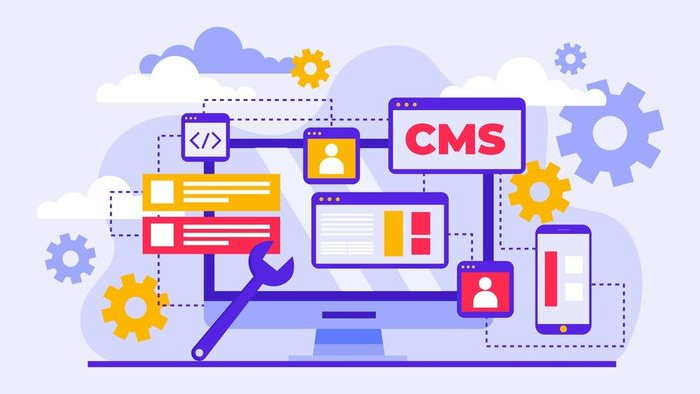Lorem ipsum dolor sit, amet consectetur adipisicing elit. Doloremque ipsa amet in dolores adipisci dolorum distinctio, impedit mollitia quam est maiores laborum, aliquam a voluptate nulla nobis unde placeat corporis! Lorem ipsum dolor sit amet, consectetur adipisicing elit. Amet omnis molestias praesentium commodi cupiditate eos alias explicabo harum accusantium, sint veniam quisquam dicta similique quam consequatur, voluptates culpa at fugit. Lorem ipsum dolor sit amet consectetur adipisicing elit. Ullam harum hic porro iste distinctio voluptatum libero suscipit assumenda? Ducimus accusamus tempora labore magnam laborum iusto maiores, sunt aut. Iure, quia?

Leading Technologies Empowering Our CMS Solutions
Explore the cutting-edge technologies that power our custom CMS development services. With a focus on innovation and efficiency, we leverage advanced tools and frameworks to deliver exceptional customized CMS solutions.
Content Management Systems (CMS) :
- WordPress
- Drupal
- Joomla
- Magento
- HTML5
- CSS3
- JavaScript
- jQuery
- PHP
- Node.js
- Python
- Ruby on Rails
- MySQL
- MongoDB
- PostgreSQL
- SQL Server
- Git
- SVN
- Mercurial
- Bitbucket
Frontend Technologies:
Backend Technologies:
Database Management Systems (DBMS):
Version Control Systems (VCS):
Introduction to CMS Development
Understanding the Basics
In today’s digital landscape, Content Management Systems (CMS) play a crucial role in efficiently creating, managing, and publishing web content. Understanding the basics of CMS development is essential for businesses and developers alike to harness the full potential of these powerful platforms.
Key Components of CMS Development
- Content Creation: CMS platforms offer intuitive tools for creating and editing various types of content, including text, images, videos, and documents.
- Content Management:Users can organize and categorize content within the CMS, making it easier to search, retrieve, and update.
- User Management:CMS systems allow administrators to manage user roles and permissions, controlling access to different sections of the website.
- Workflow Management:Advanced CMS platforms support workflow automation, facilitating collaboration among multiple users in content creation and review processes.
- Design and Customization:Developers can customize the design and layout of websites using themes, templates, and plugins, ensuring a unique and branded online presence.
Benefits of CMS Development
- Ease of Use:CMS platforms offer a user-friendly interface, reducing the learning curve for content editors and administrators.
- Efficiency:Built-in tools for content management and workflow automation streamline the process of creating and publishing web content.
- Scalability:CMS systems can scale to accommodate a growing content and user base, making them suitable for websites of all sizes.
- SEO-Friendliness: Many CMS platforms include features for optimizing web pages for search engines, improving visibility and organic traffic.
- Cost-Effectiveness:By eliminating the need for custom development from scratch, CMS development can save time and resources for businesses.















